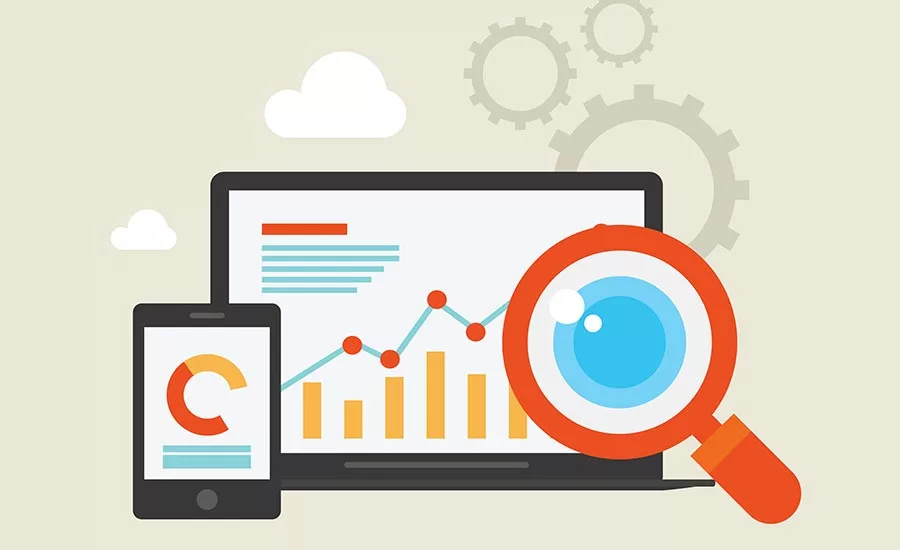The Power of IoT
How the Internet of Things helps today’s compressors become more energy efficient for tomorrow’s food and beverage processing lines.

Imagine you’re at the gate to board a plane. Your phone begins to beep, alerting you to a problem with an air compressor that’s housed in one of the manufacturing plants five states over from where you’re currently sitting.
However, instead of panicking, you can essentially ignore the alert and board your plane, business as usual. That’s because whatever the problem is, this same alert deployed to the operators on staff at the manufacturing plant where the problem exists, enabling workers on site to resolve the issue.
This peace of mind is all thanks to the Internet of Things (IoT). And, with the right controls in place, any compressed air system can function in a more reliable and energy efficient manner.
Smart monitoring is the future
Every time a production system goes down, it creates a troubling ripple effect that eventually leads to downtime, product loss and financial strain. Today’s food and beverage processors can’t afford to experience downtime. They can’t afford to lose product. And, they can’t afford to not be in operation. That’s why it’s imperative for compressors to work “smarter,” predicting failures and resolving problems before “real” problems even exist.
Fortunately, advancements in the compressor monitoring and controls solutions incorporate Industrial Internet of Things (IIoT)-enabled solutions such as advanced analytics, machine learning and enhanced communications to help users realize greater performance, compressor uptime and reduced maintenance costs, according to research conducted by ARC Advisory Group, Dedham, Mass.
“Compressor monitoring and controls suppliers are facing a market that is undergoing continuous change, especially as more customers move toward more open systems that enable the ability to leverage IIoT-enabled solutions to enhance operational performance,” says Tim Shea, senior analyst and key author of the ARC report. “Developing a strategy that allows machine builders to leverage connected products and infrastructure is critical to sustaining viability of a supplier as a competitor in this market.”
Case in point: IoT-enabled features provide additional safeguarding of the manufacturing line.
Monitoring indicators calculate compressed air pressure and deliver air/water pressure statistics, such as peak times of use, etc., thus improving operating costs and minimizing energy consumption.
Remote monitoring provides real-time updates to service and maintenance needs and other performance issues.
Data monitoring programs can be customizable depending on the customers’ wants, needs and goals, and can produce results via email and text message alerts.
Cloud-based technology delivers analytics and other measurement tools to help operators make better, more informed decisions.
“Adding compressed air systems within the context of the Smart Factory promises major efficiency gains, since energy for making compressed air is quite often one of the highest costs a plant may have. Many of today’s plants are concerned about controlling costs, but overlook compressors until there is a problem with a unit and their compressed air supply is disrupted, causing production to come to a standstill,” says Wayne Perry, senior technical director for Kaeser Compressors, Inc., Fredericksburg, Va. “The Smart Factory has the potential to amplify this ‘set it and forget it’ mentality even more since increased monitoring would enable predictive maintenance, and as a result, prevent disruptions to the compressed air supply.”
Industry 4.0 comprehensive solutions
Whether it’s to optimize data/information, provide analytics or simply connect machines to operators and vice versa, measuring and monitoring controls are becoming more and more commonplace in today’s compressed air systems. And, Industry 4.0, which pertains to cyber-physical systems, IoT, cloud computing and cognitive computing, continues to advance food and beverage manufacturers’ abilities to produce quality, safe food in the most economical manner possible.
Industry 4.0 enables compressors to work smarter, not harder.
And, from 2018 on, cross-industry devices, such as those targeting smart buildings, including LED lighting, HVAC and physical security systems, will take the lead, reaching 4.4 billion units, according to research presented by Gartner, Inc., Stamford, Conn.
For its part, Kaeser Compressors continues to provide Industry 4.0-type solutions. For example, Sigma Control 2 is the company’s most advanced unit controller. Sigma Control 2 combines safe and efficient internal supervision of the machine with important information and maintenance-friendly features. Likewise, the operator interface offers easy access to all settings and information.
Meanwhile, the Sigma Air Manager 4.0 compressed air management system monitors and controls all components within the compressed air supply system to achieve maximum cost savings. Features include improved pressure values, automatic matching of delivery according to fluctuating demand, continuous fine-tuning of system performance to ensure optimized energy efficiency and predictive maintenance to prevent unplanned downtime.
“Leveraging IoT for compressed air systems offers real advantages to plant operators looking to reduce downtime and energy consumption,” says Michael Camber, marketing services manager at Kaeser. “Internet-based communications technologies offer real-time reporting not only on energy usage, but also on equipment status and conditions (e.g. upcoming maintenance intervals or current problems) that provide better overall asset management.”
Regardless of your company’s goals—to reduce energy consumption or improve the monitoring and measuring of your facility’s compressor—IoT-enabled features give operators the power to work “smarter” from beginning to end.
Looking for a reprint of this article?
From high-res PDFs to custom plaques, order your copy today!





